
Summer is the main active season for many bee species. After a wet spring in Western Oregon, the sun is out and our world is in bloom!
So what are summer bees up to right now? The main events of the season are…
- Foraging for nectar and pollen
- Finding mates and laying eggs
- Excavating, finding and building nests for offspring.
Adult bees also experience predation by spiders and birds during this time. This Crab Spider caught a female long horned bee in its jaws!

So who exactly is out and about in your garden at this time of year?
Bumblebees and honeybees visibly dominate the landscape throughout the summer, but lean in closer to your flowering plants and you’ll find the smaller sweat bees (family: Halictidae), long horned bees (genera: Melissodes and Eucera), leafcutter bees (genus: Megachile) and small carpenter bees (genus: Ceratina). Although there are many others amid the vast diversity of bee species science is only beginning to understand, these are some common garden visitors. We’ll go through each group and their summer activities.

Notice the two adomenal segments beneath the yellow stripe of this male yellow-faced bumblebee (Bombus vosnesenskii). Photo by Jen Hayes.

Bumblebees: By summertime, most queens have established colonies of workers who do the foraging for the hive, so we see less large queen bumblebees and more smaller workers as the season progresses. Later in the season, queens lay male eggs as well as eggs for the next generation of queens. Male bumblebees take to the landscape in mid to later summer, recognizable by their additional segments on their abdomen, long antennae, and by the fact that they don’t carry pollen like females do. Males do not have stingers, so if you can confidently identify male bumblebees, they are fun to play with while they’re waiting around for new queens with which to mate. You’ll find them sipping on nectar-rich plants like lavender, herbs, asters and heal-all.
Honeybees: Summer is prime time for honeybees! Worker populations are at their peaks; pollen and nectar are flowing. As hive population size rises and available hive space remains static, honeybees may organize a swarm. In this process, the current queen lays new queen eggs and part of the colony joins her to lift off and leave the colony in search of a new cavity to make their home. Swarming is considered a form of colony-level reproduction supporting the idea that honey bee colonies are super organisms. Swarming is common in spring and early summer. Beekeepers add new boxes to hives so prevent their colonies from swarming.
Late summer is mating season for honey bees. Males and new queen eggs are laid and emerge to mate with individuals from other colonies. Honeybees mate in the air at heights ranging between 15 and 60 m1.

Sweat bees
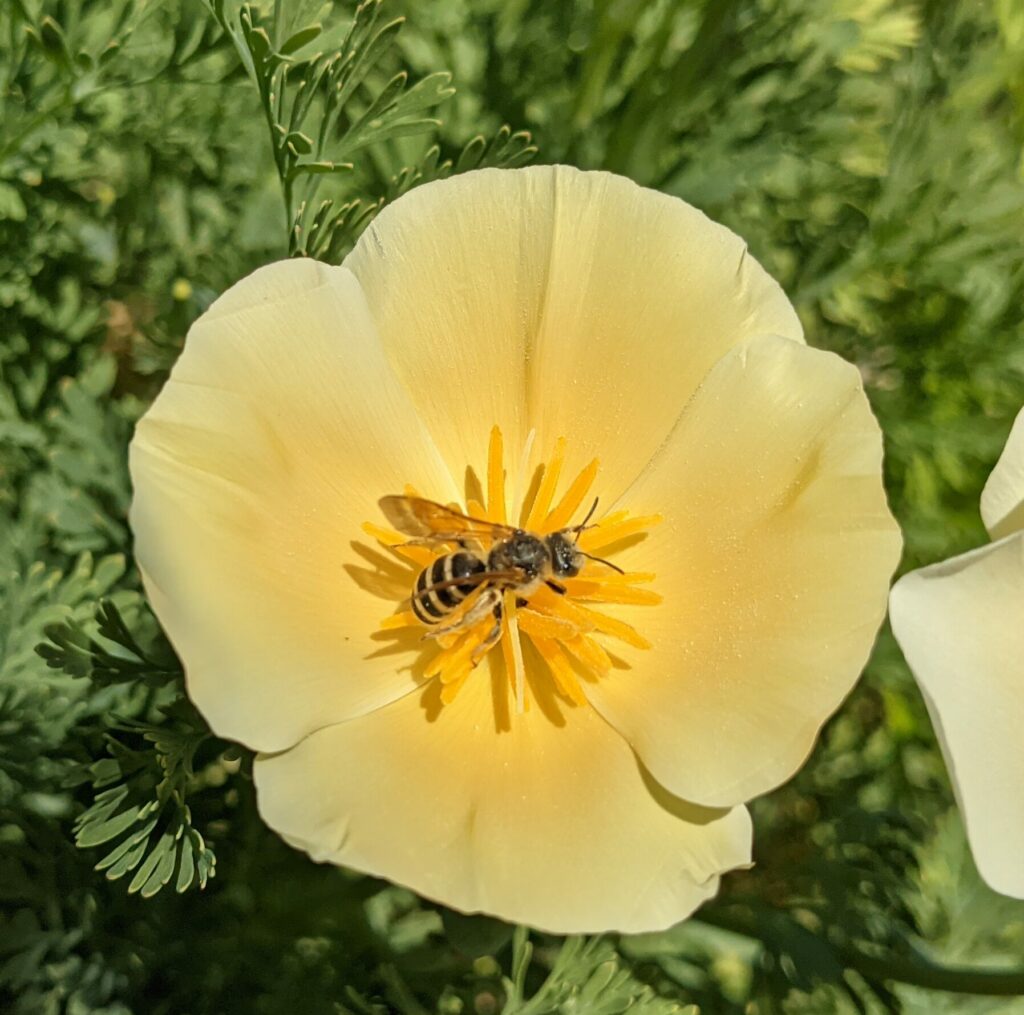
A halictid dear to our hearts at the Garden Ecology Lab is the metallic green bee (genus: Agapostemon). While females provision nests in the soil, you can find males resting in congregations on flowers in the evening time and early morning!
Sweat bees are one of the most common groups of “small” bees you’ll find in your garden. They forage on a wide variety of plants and come in a wide range of sizes, but most have striped abdomens, and all carry pollen on their hind legs and nest in soil.
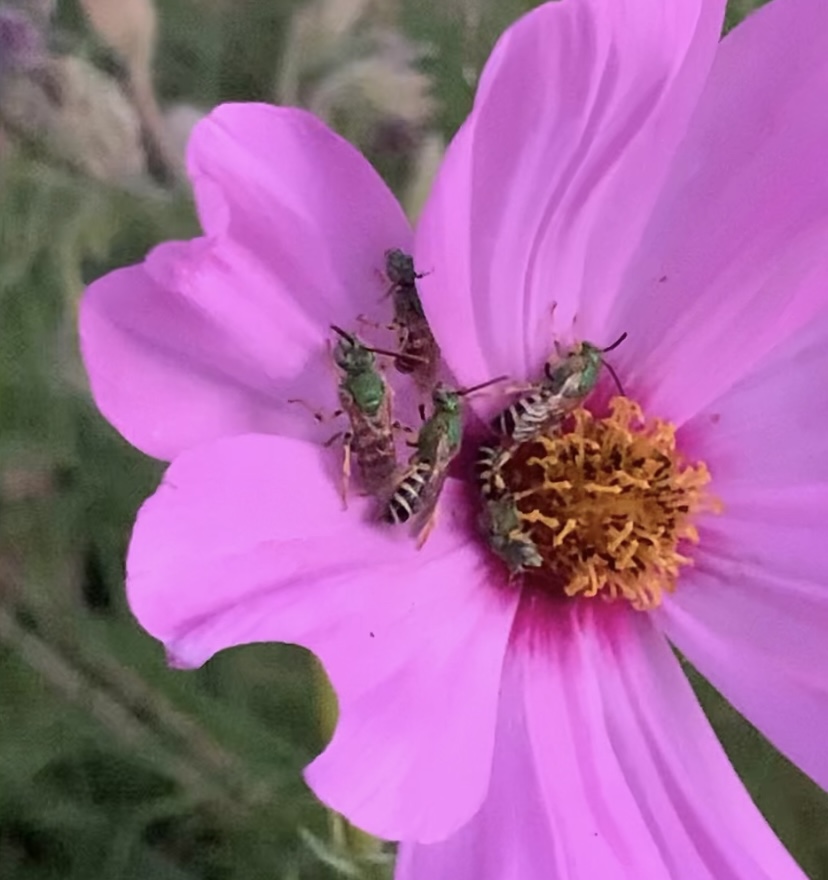
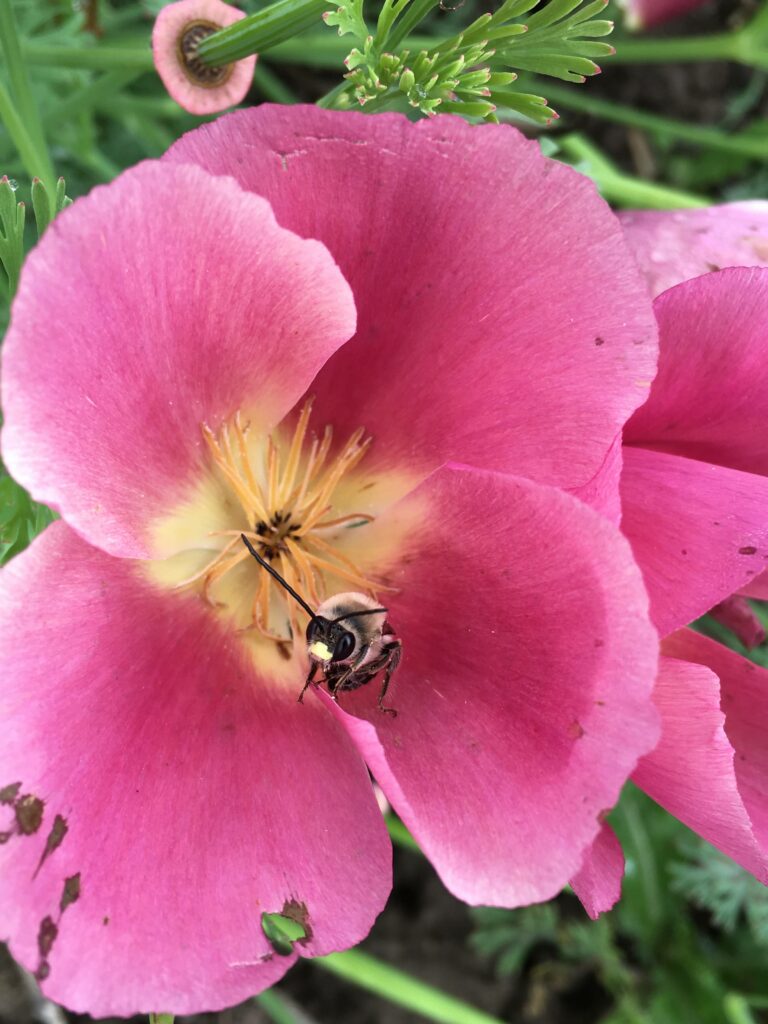
Long Horned bees
Long horned bees are most active on our research plots in the mid to late summer. I love this group because they are so easy to recognize. Males have antennae that are way longer than other bees’ relative to their bodies. The females, who bear antenna of normal lengths, are still easy to spot because they have long feathery scopa (or hairs) on their hind legs for collecting pollen that they absolutely pack with pollen while foraging.
Long horned bees are sometimes referred to as “sunflower bees” for their love of foraging on sunflowers.
Long horned bees nest in the soil2, so when you see them take it as a reminder to leave some uncovered, undisturbed soil in your garden for these bees to persist!


Small Carpenter bees
When I point out small carpenter bees (genus: Ceratina), most of my friends can’t believe they are bees. They think they are some kind of flying ant. Their bodies are sleek, and often shimmer with a green or blue reflective gleam.
Small carpenter bees are considered wood excavators as they dig out the pith from dry plant canes for their nests. Ceratina are a unique group in terms of their parenting style. Unlike other solitary bee mothers, Ceratina mothers guard their offspring even after their offspring have developed into adults. Mothers stick around as long as they can until Winter falls.2
Leafcutter bees
Leafcutter bees (genus: Megachile), as their names suggest cut leaves from their host plants! They use these bits of leaves to line their ground and cavity nests, to waterproof and protect their offspring.
Leafcutter bees are from the bee family Megachilidae, a family known for creative nest building. Bees in this family were supposedly able to expand their ranges due to their flexibility in nesting site and material. They’ve been found nesting in wood, porous stones, stems, galls, and even snail shells filling these various cavities with leaves, mud, plant resins, pebbles, straw and even petals2. The fascinating nest building behavior we’ve gotten to witness in the field is petal cutting of Farewell-to-Spring (Clarkia amoena) blooms.
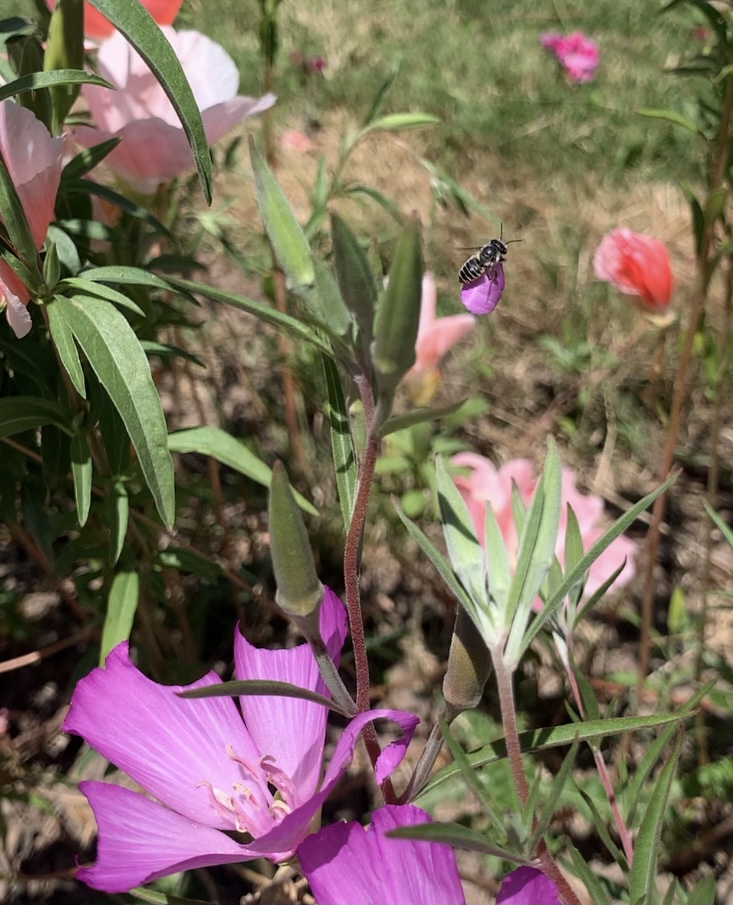
Thank you for joining us on this exploration of some of Oregon’s summer bees and what they are currently doing! We will release one more blog post in this series. Be sure to subscribe so you don’t miss the next in the series!
Sources
1: Landscape Analysis of Drone Congregation Areas of the Honey Bee, Apis mellifera by Galindo-Cardona et. al, 2012. https://www.ncbi.nlm.nih.gov/pmc/articles/PMC3635128/
2: The Solitary Bees by Bryan N. Danforth, Robert L. Minckley, and John L. Neff. 2019.
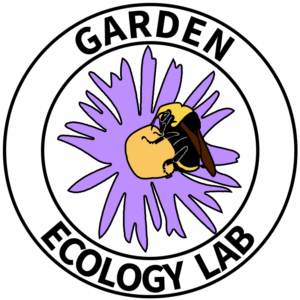





11 Comments
Add Yours →I’ve had a wool carder bee laying her eggs in a window crevice for the last month. She just sealed the hole with cottonwood fluff.
I also have a hive of feral honeybees that settled in a dying willow in my backyard.
Hey, Mallory, great article. I thought I should point out that the article with the photos of leafcutter bees is behind a paywall, so readers won’t be able to see it.
Thanks for letting me know, Signe!
How can I subscribe to this?
Hi Caroline! If you go to the Garden Ecology Lab home page (which you can do by clicking the title Garden Ecology Lab at the top of any page), there will be a place to enter your email and a button that says subscribe on the right under the navigation tabs. Hopefully that helps!
Fantastic article!
Thank you for a great article. Got my mind off the heat! I will watch my garden even more closely now for the activity of these insects.
I’m so glad! Thanks for reading.
Great article on all the bee types!
Thank you for giving us clear photos and some likely cues so I can hope to recognize some of the more common bees. BTW – I saw a very very large black bumblebee foraging recently – kind of shiny looking – looks like the ones I usually see in the spring – is it possible it’s a queen getting ready to hibernate already?
Sorry for the late reply! I think that could’ve been a new generation queen getting ready, yes! 🙂